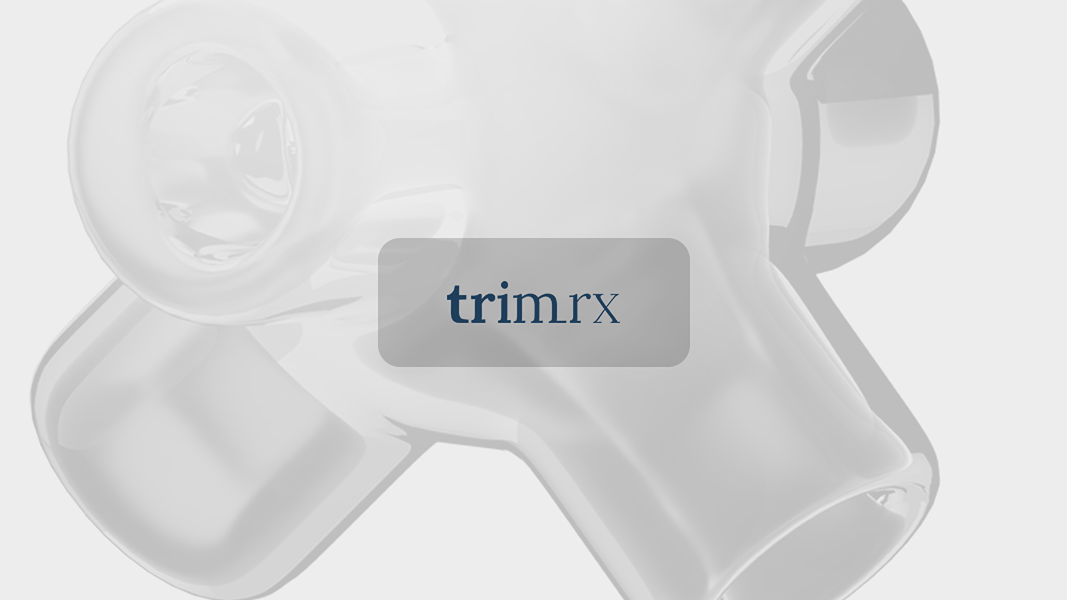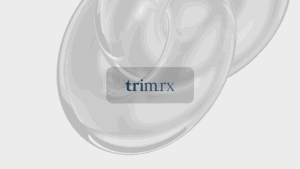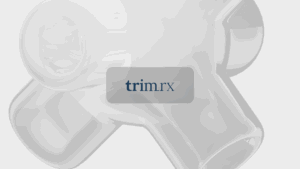How to Eat on Ozempic: A Guide to Nourishing Your Body

Introduction
Have you ever felt frustrated trying to balance your hunger with your health goals, especially when taking medications like Ozempic? You’re not alone. Ozempic, a medication that has gained prominence for its potential to aid in weight loss and manage blood sugar levels, can significantly alter your appetite and digestive processes. As we navigate this journey together, understanding how to eat on Ozempic becomes crucial not just for weight management, but also for maintaining overall nutritional health.
In this post, we will delve into the intricacies of eating while on Ozempic, exploring the types of foods that can enhance your experience with this treatment while minimizing any potential side effects. We will guide you through nutritional priorities, foods to embrace or avoid, and practical strategies to make your diet work for you. Our goal is to help you embrace a healthier lifestyle that aligns with your weight loss journey and supports your unique needs.
It’s a common scenario: you start a new medication designed to help with weight loss, such as Ozempic, and suddenly, your relationship with food feels complicated. This medication works by regulating blood sugar, slowing stomach emptying, and reducing hunger signals in the brain, which can lead to a reduction in appetite. However, this change can come with side effects, including nausea and gastrointestinal discomfort. Understanding how to navigate your dietary choices while on Ozempic can empower you to maintain your health and wellness efficiently.
At TrimRx, our mission is to provide you with personalized, medically supervised care that helps you achieve sustainable weight loss. Therefore, in this blog post, we’ll cover essential topics including:
- The role of Ozempic in weight loss and blood sugar management
- Nutritional priorities for those taking Ozempic
- Foods to include in your diet, and those to avoid
- Strategies for minimizing side effects while ensuring adequate nutrition
- Practical tips for maintaining a balanced and enjoyable diet
By the end of this article, you will have a comprehensive understanding of how to eat on Ozempic, enabling you to make informed decisions that support your weight loss journey.
Understanding Ozempic and Its Role in Weight Loss
Ozempic, also known as semaglutide, belongs to a class of medications called GLP-1 receptor agonists. It primarily helps manage type 2 diabetes but has also been shown to promote weight loss. It does this through several mechanisms:
- Appetite Regulation: Ozempic alters hormonal signals that reduce feelings of hunger, which can lead to decreased caloric intake.
- Slowing Gastric Emptying: This medication slows down how quickly food moves from the stomach to the intestines, which can enhance feelings of fullness.
- Blood Sugar Control: By improving insulin sensitivity and reducing glucose production in the liver, Ozempic helps maintain stable blood sugar levels, which is crucial for overall health.
These mechanisms can contribute to effective weight loss when combined with a balanced diet and regular physical activity. However, they can also lead to side effects, particularly digestive discomfort, making it essential to approach your diet thoughtfully.
Nutritional Priorities for Those Taking Ozempic
When taking Ozempic, it’s vital to focus on a diet that is nutrient-dense and supports your body’s needs. Here are some key nutritional priorities:
1. Emphasize Protein Intake
Protein plays a crucial role in maintaining muscle mass during weight loss. As Ozempic can decrease appetite, ensuring adequate protein intake becomes even more important. Aim for lean protein sources such as:
- Skinless chicken breast
- Fish and seafood
- Eggs
- Plant-based proteins like tofu and legumes
2. Include Non-Starchy Vegetables
Non-starchy vegetables are low in calories but high in fiber, making them an excellent choice for those on Ozempic. They can help you feel full while providing essential vitamins and minerals. Incorporate a variety of colorful vegetables into your meals, such as:
- Spinach
- Broccoli
- Carrots
- Bell peppers
- Cauliflower
3. Choose Healthy Fats
Healthy fats can help you feel satiated and are necessary for overall health. Include sources of healthy fats like:
- Avocados
- Nuts and seeds
- Olive oil
- Fatty fish (e.g., salmon)
4. Opt for Whole Grains
Whole grains provide fiber and essential nutrients while keeping you full longer. Choose unprocessed whole grains such as:
- Quinoa
- Brown rice
- Whole grain bread
- Oats
5. Stay Hydrated
Hydration is essential, particularly while on Ozempic, as it can help mitigate some side effects like nausea. Aim to drink plenty of water throughout the day.
Foods to Include in Your Diet
To maximize your experience on Ozempic, let’s explore some foods that align with the priorities we’ve just discussed.
Lean Protein Sources
- Chicken Breast: Skinless, grilled or baked chicken breast is a versatile option.
- Fish: Salmon, tuna, and cod offer healthy omega-3 fatty acids.
- Eggs: A great source of protein that can be enjoyed in various ways.
Non-Starchy Vegetables
- Spinach: Packed with nutrients, spinach can be added to smoothies, salads, or cooked dishes.
- Broccoli: This cruciferous vegetable is high in fiber and can be steamed, roasted, or added to stir-fries.
- Bell Peppers: Rich in vitamin C, these can be sliced for snacks or included in salads.
Healthy Fats
- Avocado: A nutrient-dense food that can be added to salads or spread on whole-grain toast.
- Nuts: Almonds, walnuts, and pistachios make for great snacks and provide healthy fats.
- Olive Oil: Use it for cooking or as a salad dressing.
Whole Grains
- Quinoa: A complete protein source that can act as a base for salads or bowls.
- Brown Rice: A filling side that pairs well with various proteins and vegetables.
- Oats: Excellent for breakfast, providing fiber and a good start to the day.
Fruits
Fresh fruits are important for their vitamins and fiber. Consider including:
- Berries: Blueberries, strawberries, and raspberries are low in sugar and high in antioxidants.
- Apples: A convenient snack that offers fiber and hydration.
- Peaches: Juicy and satisfying, peaches can be enjoyed fresh or added to yogurt.
Foods to Avoid on Ozempic
While there are numerous foods to include, it’s equally important to identify items that may exacerbate side effects or hinder your progress on Ozempic. Here are some foods to limit or avoid:
High-Fat Foods
- Fried Foods: Items like fried chicken or french fries can slow digestion further and increase gastrointestinal discomfort.
- Greasy Foods: Foods high in unhealthy fats can lead to bloating and nausea.
Sugary Snacks and Drinks
- Soda and Sugary Beverages: These can spike blood sugar levels and lead to increased hunger.
- Candies and Desserts: High in calories and low in nutritional value, they can derail your weight loss efforts.
Processed Foods
- Ultra-Processed Foods: Foods that are highly processed often contain unhealthy additives and preservatives that may affect your digestive system negatively.
High-Glycemic Foods
- White Bread and Pastries: These can lead to rapid spikes in blood sugar and are best limited.
- Starchy Vegetables in Excess: While healthy in moderation, excessive intake of starchy vegetables like potatoes can lead to higher carbohydrate consumption.
Strategies for Minimizing Side Effects
Navigating dietary choices while on Ozempic can be challenging, especially with potential side effects like nausea and digestive issues. Here are some strategies to help minimize discomfort:
1. Eat Smaller, More Frequent Meals
Instead of three large meals, consider eating smaller portions throughout the day. This can help reduce feelings of fullness and minimize digestive discomfort.
2. Chew Food Thoroughly
Taking your time to chew food well can aid in digestion and make it easier for your body to process meals.
3. Stay Hydrated
Drinking water throughout the day can help reduce nausea and support digestion. Aim for at least 8 cups of water daily.
4. Avoid Lying Down After Eating
Staying upright for at least 30 minutes after a meal can help prevent acid reflux and support digestion.
5. Monitor Food Reactions
Keeping a food diary can help you identify which foods trigger discomfort. This awareness allows you to make informed choices about what to eat and what to avoid.
Conclusion
As we’ve explored, understanding how to eat on Ozempic is key to successfully managing weight loss and maintaining your overall health. By prioritizing nutrient-dense foods, staying mindful of portion sizes, and being attentive to your body’s signals, you can create a balanced diet that supports your weight loss journey.
At TrimRx, we are dedicated to helping you navigate this journey with personalized weight loss solutions and support. As you embark on this path, we encourage you to reflect on your dietary choices and consider taking our free assessment quiz to see if you qualify for our prescription weight loss medications. Together, we can work towards achieving your health goals.
Frequently Asked Questions (FAQs)
1. Can I eat whatever I want while on Ozempic?
While there are no strict dietary restrictions, it’s important to focus on nutrient-dense foods and avoid those that may trigger side effects or hinder your weight loss goals.
2. How much protein should I eat while on Ozempic?
Aim for at least 60 grams of protein daily, but this may vary based on individual needs. Consulting with a healthcare provider or dietitian can help determine your specific requirements.
3. What should I do if I experience nausea while on Ozempic?
Eating bland foods, drinking plenty of water, and avoiding high-fat or greasy foods can help alleviate nausea. If symptoms persist, consult with your healthcare provider for further guidance.
4. Are there any foods I should completely avoid while on Ozempic?
While individual tolerance varies, it’s generally advisable to limit high-fat, sugary, and ultra-processed foods to minimize side effects and support weight loss.
5. How can I ensure I am getting enough nutrition while taking Ozempic?
Focusing on a balanced diet that includes lean proteins, non-starchy vegetables, whole grains, and healthy fats can help you meet your nutritional needs while on Ozempic. Keeping a food diary can also help you track what works best for your body.
By embracing these dietary strategies, you can effectively navigate your weight loss journey with Ozempic, ensuring that you not only lose weight but also feel your best along the way.
Keep reading
Can You Eat Oranges on Ozempic? Understanding Dietary Choices While Managing Diabetes
Can you eat oranges on Ozempic? Discover how to balance your diet while managing diabetes with Ozempic. Learn more now!
Can You Eat Avocado on Ozempic? A Comprehensive Guide to Nutrition While Using Semaglutide
Wondering if you can eat avocado on Ozempic? Discover how this nutrient-rich fruit can enhance your diet while managing weight and blood sugar.
Does Ozempic Burn Fat or Just Suppress Appetite?
Discover how Ozempic helps in fat burning and appetite suppression for effective weight loss. Learn more and start your journey today!
Can You Eat Nuts on Ozempic? Exploring Dietary Choices for Weight Management
Wondering if you can eat nuts on Ozempic? Discover how to safely include them in your diet with our guide for optimal health!
When is the Best Time to Inject Ozempic?
Discover the best time to inject Ozempic for optimal effectiveness. Explore tips, meal timing, and a personalized approach to your health journey!
Where to Store Ozempic Pen: Essential Tips for Effective Medication Management
Discover essential tips for storing your Ozempic pen effectively. Ensure your medication remains potent and manage your health confidently.
Does Ozempic 2 mg Pen Deliver 0.5 mg? Understanding Dosing and Usage
Explore how the Ozempic 2 mg pen delivers flexible dosing, including 0.5 mg. Learn tips for usage and why this medication is a key in diabetes management.
How Do You Feel After Ozempic Injection? Insights and Experiences
Discover what to expect after an Ozempic injection, from initial reactions to tips for side effects. Start your health journey with us!
Understanding the Cost and Value of a 4mg Ozempic Pen
Discover how Ozempic works, its dosing options, and what influences its cost. Empower your health journey with insights and support from TrimRx!







